One of my biggest aha moments during online teaching came when I started suffering connection problems (my own and my students). I had flipped instructions in my previous classes, but with these issues of arriving late to class (connecting late) or unexpectedly disconnecting from the online synchronous session, it became so much more crucial to have my instructions available at all times. Moreover, the logistics of using breakout rooms (individual chat rooms) and making students accountable in a virtual setting led to more rigourous planning of these instructions in order to reach all students in different ways.
In this blog post, I will provide a step-by-step process of how to plan and design differentiated flipped instructions.
Why flip instructions?
Honestly, it is the easiest way to start flipping content if you are a first-time flipper, and it is probably the best type of content you can decide to frequently flip since it is common for students to ask you to repeat the instruction for any number of reasons (distraction, too many steps, arriving late, etc). Think about it, have you ever had to repeat instructions? I am absolutely positive that the answer to this question is YES. This is especially true in educational settings where our students are heterogeneous. How many times have you repeated instructions in a lesson? Even if you answer is as low as once, I assure you flipping instructions is the way to go.
Where does differentiation step in?
For Carol Tomlinson (2017), differentiation means tailoring or adjusting instruction in order to respond to students’ needs. Our students come to class with a number of variances such as their language level, learning beliefs, fixed or growth mindsets, previous knowledge, learning rhythm, reading or speaking pace, learning preferences, interests, accessibility, cultural backgrounds, first language, etc.; the list goes on. When we flip, we cater to many of these students’ variances as we are making the content accessible to students. How we make it accessible along with the formats or choices we provide will respond to even more of these differences our students come into our lessons with. For the purpose of this post, let’s focus only on providing instructions.
Including differentiation in your flipped instructions
You might be wondering: What makes these instructions flipped and differentiated? First of all, these instructions are intended to be given to students so they can check them on their own and do the work autonomously, whether it is individual or in group work. So you are replacing your verbal explanation with this instructions design. Thus, you are flipping, but more specifically, you’re in-class flipping. In regards to differentiation, the different sections respond to different student variances, which give way to more inclusive learning, not to mention the fact that the teacher can focus on monitoring and providing support as opposed to repeating instructions or staying at the center of the learning process.
Bondie and Zusho (2018) propose “Inclusive Directions” as a strategy to adjust instruction in their book Differentiated Instruction Made Practical. They propose that instructions should include four key elements: turns, roles, rules and time. When thinking of flipping, I have added three more elements: steps, language and task. Let’s see how these look and how they respond to student variance.

The image above is an example of flipped instructions I used in an online class for a discussion activity on perspective and stance with my advanced English university students. Let me break it down so you can see how to design your own.
Designing flipped instructions
Dividing sections
My first recommendation when getting started in this process is to divide the instructions into sections so that it is easy for you and your students to understand them. This is also helpful so that we don’t leave anything out.
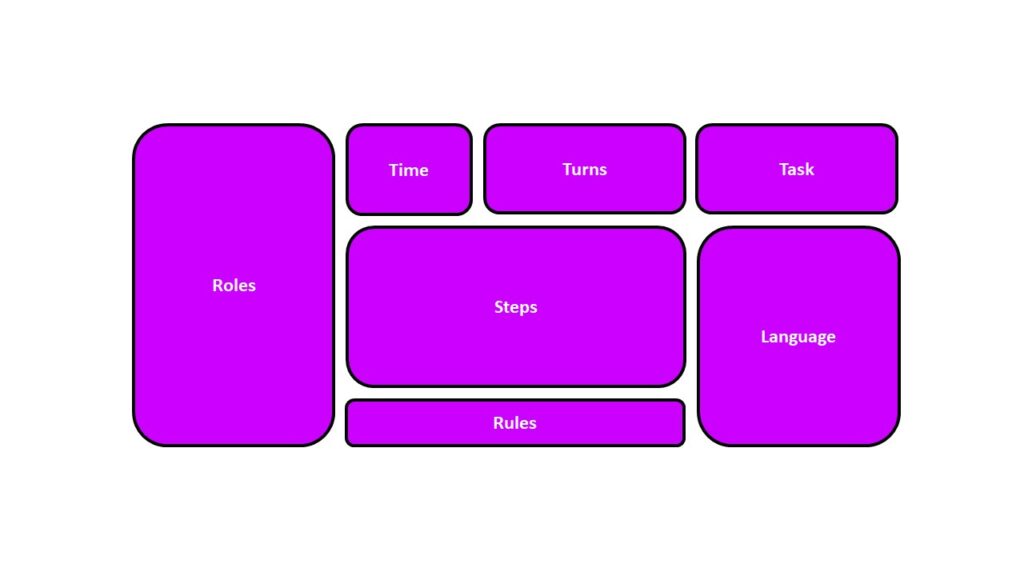
In this next image you can see how all the sections have been included in the sample instructions.
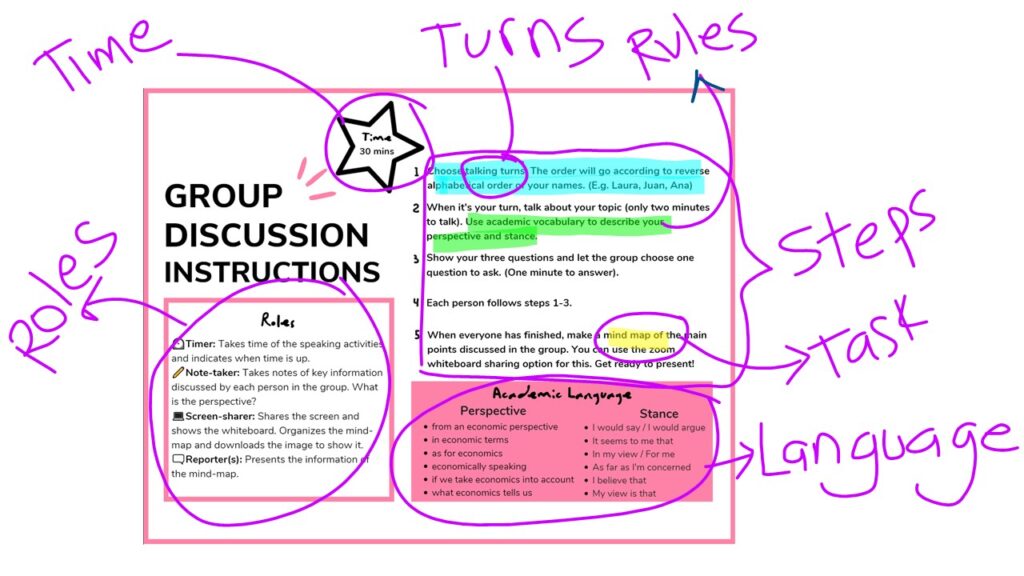
Let’s look at each one in more detail.
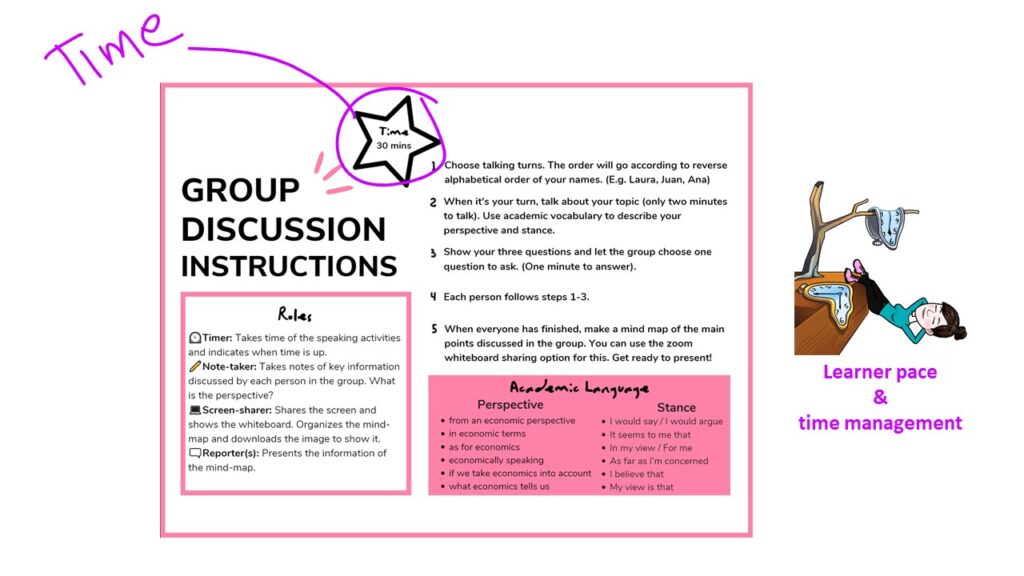
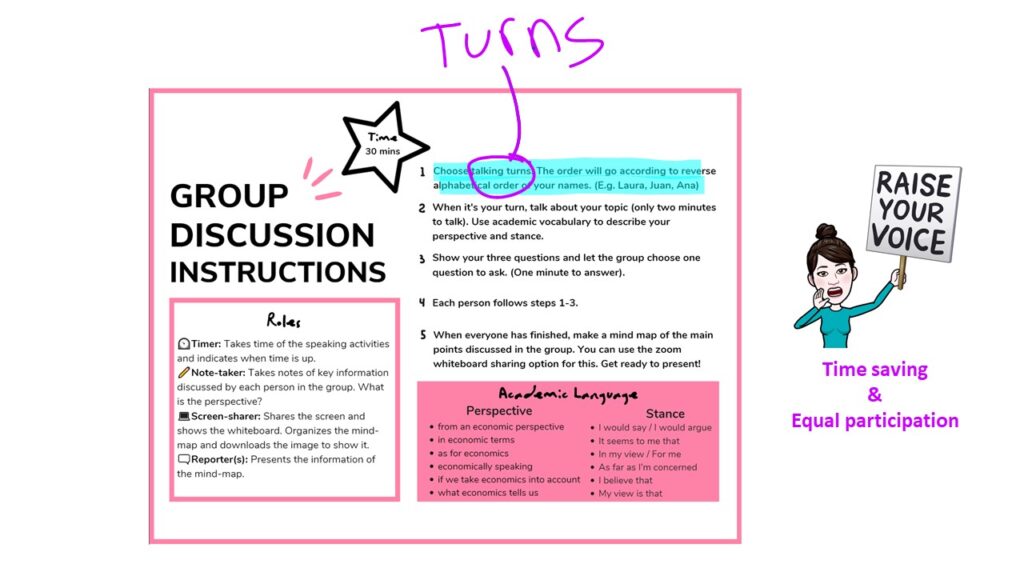
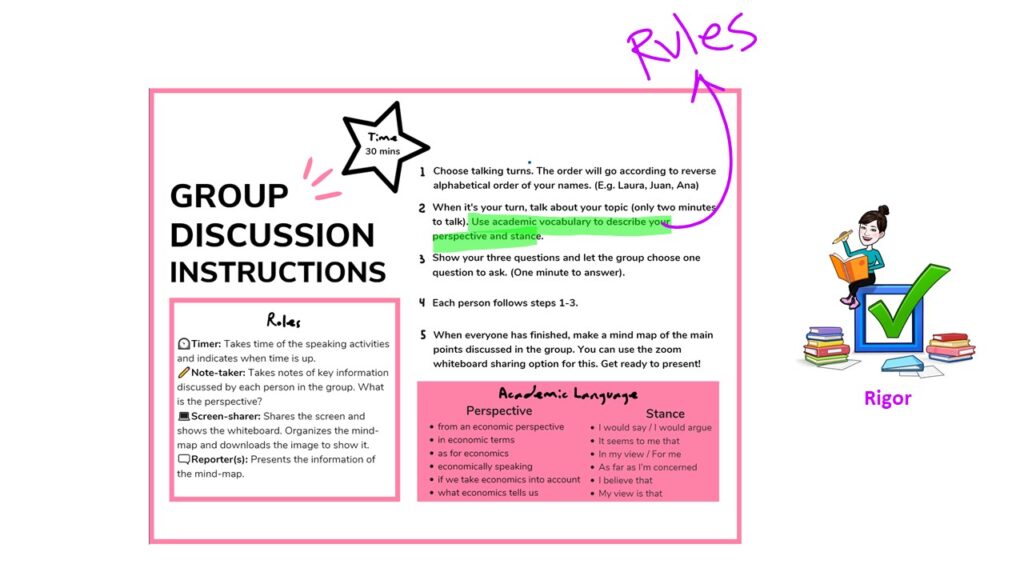
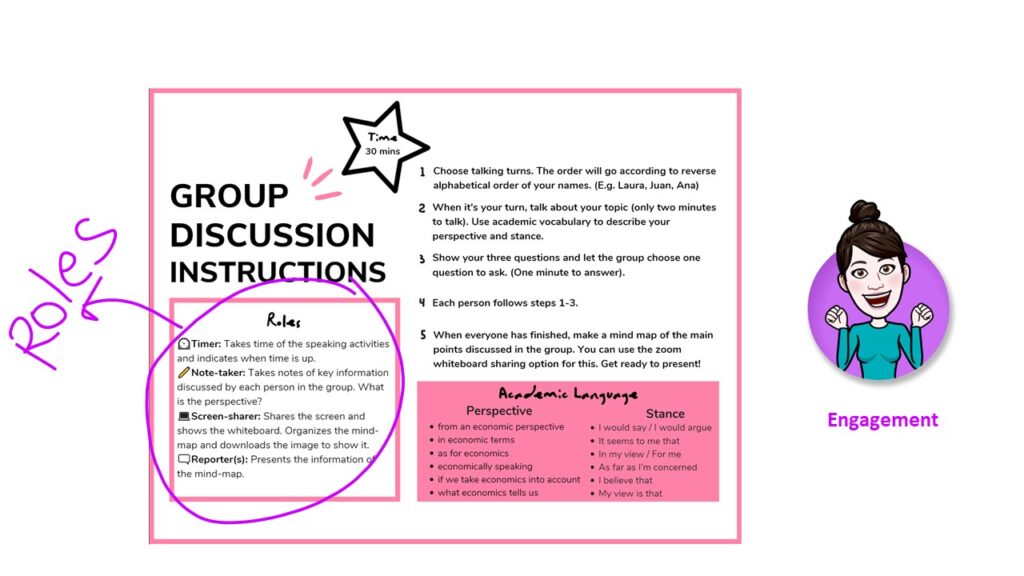
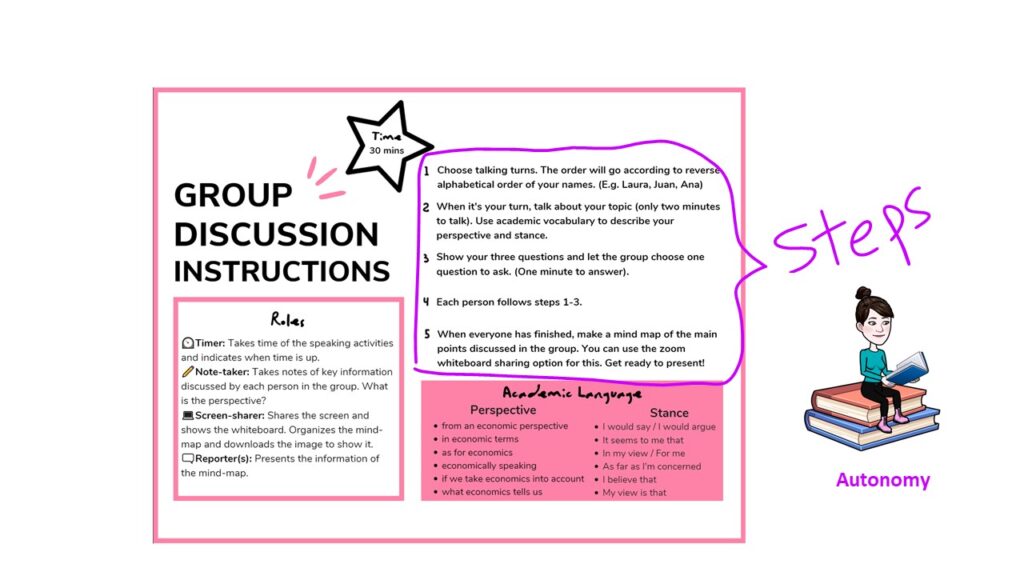
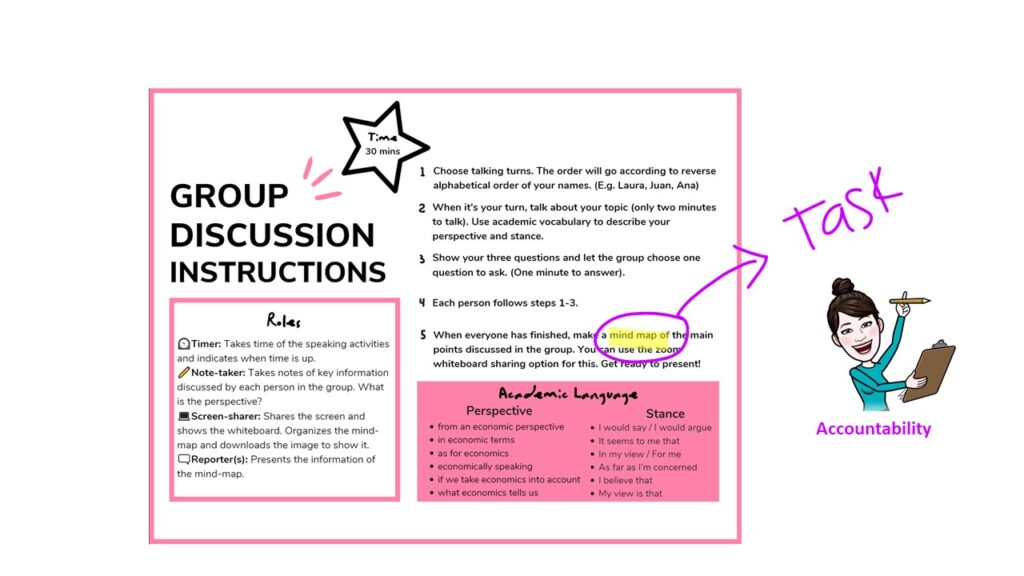
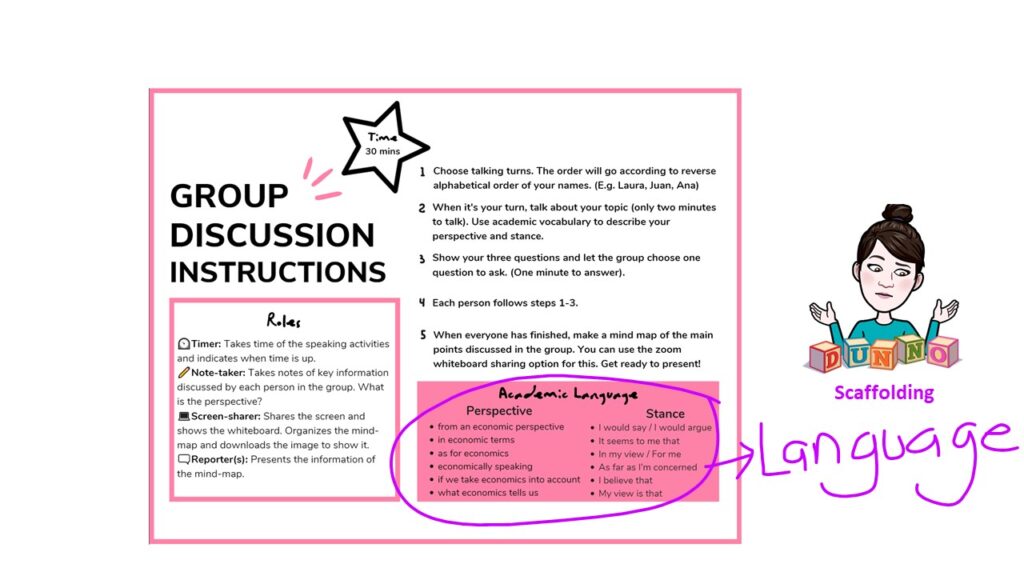
More examples of instructions
Here some other exampkes of flipped instructions I have used in various classes.
How to design
You can design your instructions in whichever design tool you feel most comfortable with. You can use a word doc, design using slides or use more sophisticated tools. My tool of preference is canva, but there are many out there with awesome designs.
Some final remarks:
Flipping instructions has become one of my biggest allies in my different teaching scenarios. I would dare say it is one of the first things you should flip to immediately notice the benefits of flipping. Keep in mind that not all these sections will be necessary at all times. The inclusion of one or another will depend on the learning objective you have set for your lesson and what it is you’re teaching. This is what has worked for me and you should use what will work best for you.
Here’s a webinar I gave about this topic in case you would like to see and hear this explanation with some additional tips and ideas.
Thanks for reading! You comments are highly appreciated!
Don’t forget to share!
Read this post in Spanish by going to this link.
References:
Bondie, R., & Zusho, A. (2018). Differentiated Instruction Made Practical: Engaging the Extremes Through Classroom Routines. Routledge.
Tomlinson, C. A. (2017). How to differentiate instruction in academically diverse classrooms. Alexandria, VA: ASCD.
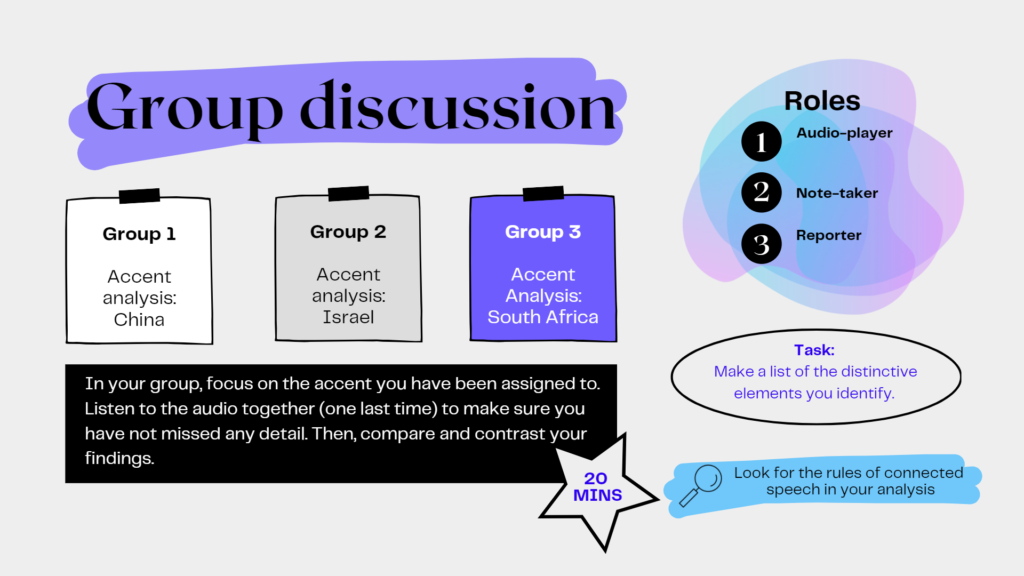
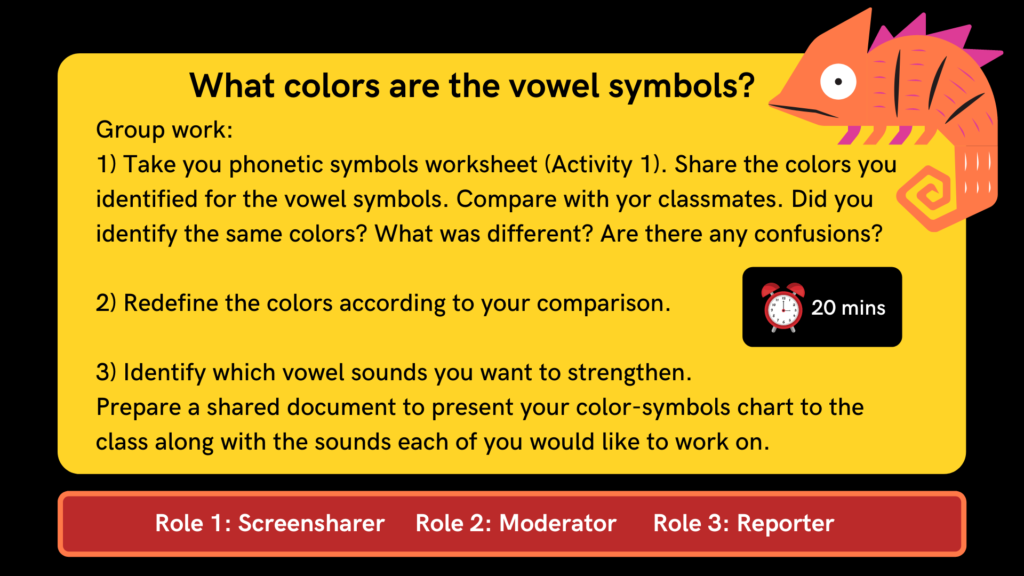
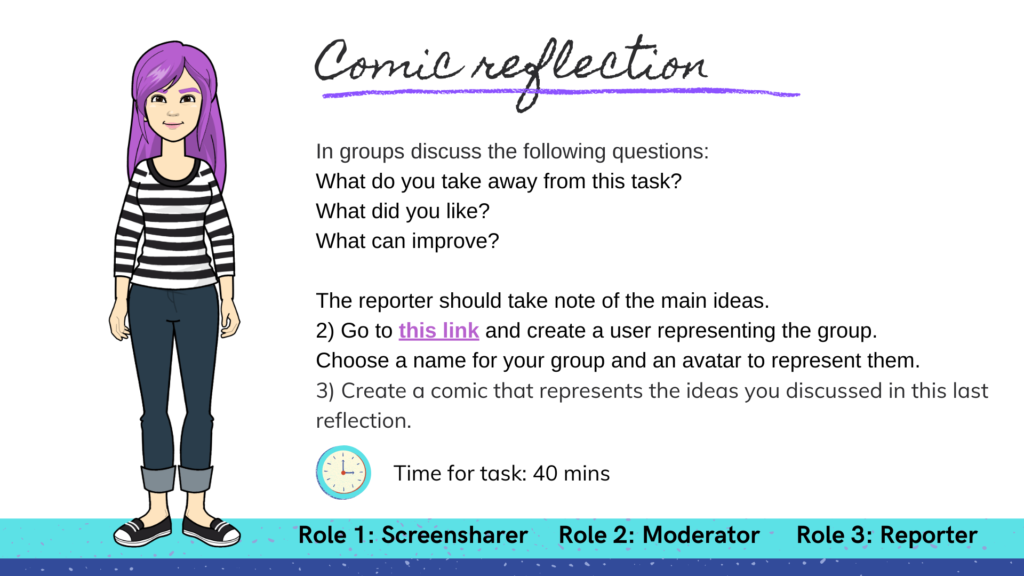
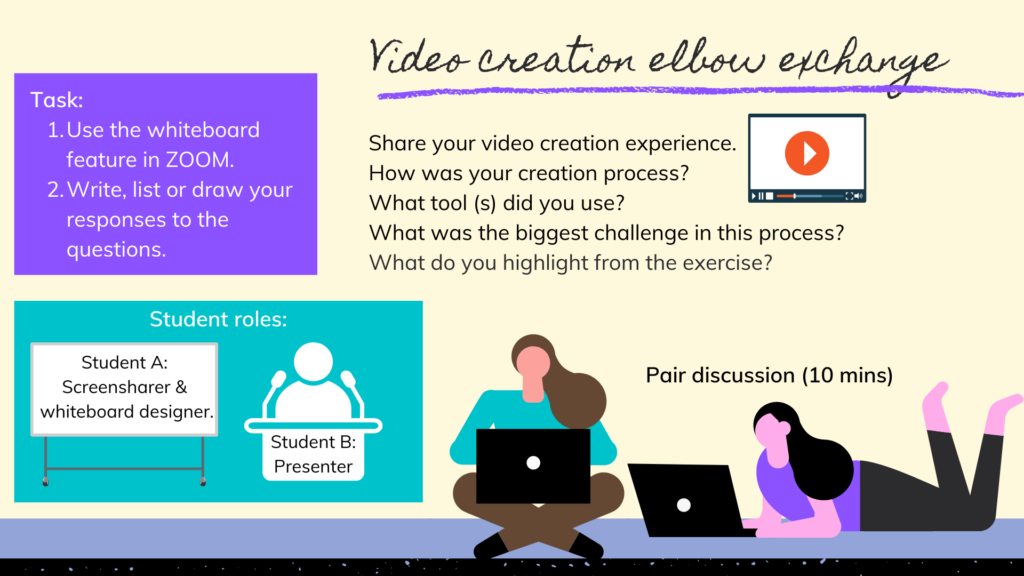
This post definitely explains your ideas and tactics of differentiated instructions step-by-step. Made some of my own differentiated flipped instructions and your post was really helpful! Thank you!
That’s great to know Mike! Thanks for reading!
Martha, how good it is to find someone who advocates for these ideas… I have tried to convince teachers in Buenos Aires about this, but it is so hard… Thanks for sharing!!
Paul
Hi Paul, I know what you mean. Not everyone is ready to embrace change. If it is at least one of us who embraces it and advocates, then more people get on board to see the benefits for themselves. Even if means it will go at a slow pace. Thanks for reading and commenting!
Thank you for this informative post! Giving clear instructions ,particularly in online classes, is really important.. This helps a lot..
Thanks for reading Candan! Glad you found it useful!
Dear Martha Ramirez, this is the most detailed flipped learning that I’ve ever learnt. I learn a lot from your presentation. I think I will apply it in my teaching. Thank you a lot.
Thanks for reading! You should definitely try it out!
Dear Martha, it was so important for me to watch the video of your presentation on differentiated instructions. I’m an EVO Flipped learning participant (2022) and I find that watching a video which explains step by step this procedure, which is new to me, it is of great help. Your explanations are really clear. Thank you, once again. See you in the live session this afternoon. Have a nice day
Denise, thank you for taking the time to watch the full explanation and for your comment! I hope you find this approach towards instructions useful in your classes.